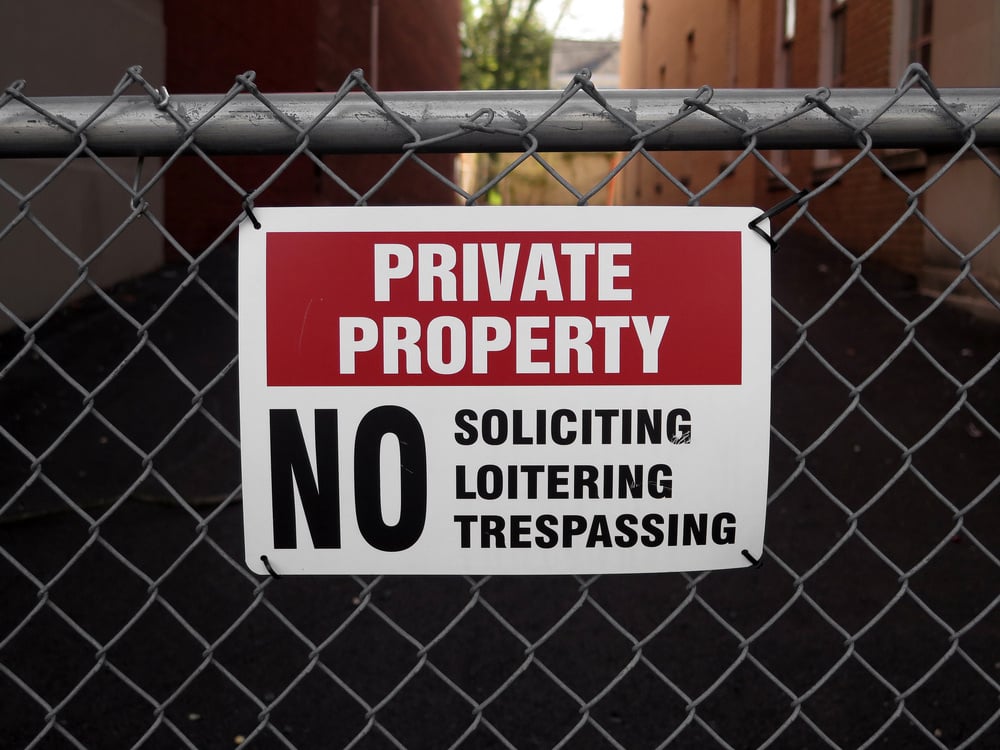
Loitering is defined when an individual stands/sits/wanders idly around a property without any real purpose. From a technical, legal perspective, loitering laws vary by state (or most often by locality). Some jurisdictions authorize the police to disperse crowds that are deemed suspicious or dangerous.
Loitering is generally viewed as a subjective act because, in and of itself, most loitering ordinances do not typically consider the act of loitering to rise to the level of a crime. This depends on the jurisdiction’s legislation. However, loitering is often associated with a variety of illegal actions.
Loitering is generally something that is viewed as unfavorable and may even potentially scare off new residents before these potential renters even have a chance to see the investment property's interior. Loitering is often connected to an area's homelessness, which makes the management of a loitering issue a rather delicate subject – one in which an investment property owner or manager must approach safely and with care and concern.
How can you safely address this problem of loitering or discourage transient individuals from hanging out near an investment property?
Protecting Investment Property from Loitering & Trespassing
Let's take a brief look at some affordable and reasonable techniques to deter or dissuade transients from loitering or trespassing about and around your investment property - where these individuals have no reason to be.
- Install surveillance cameras throughout the property. Surveillance cameras are excellent deterrents against loitering or trespassing transients.
- Install highly visible No Loitering or No Trespassing signs. These signs act as a warning that trespassing is not permitted on this property. It is often smart to place No Trespassing or No Loitering signs on each of the investment property’s boundaries.
- If the investment property has more than one resident, encourage other residents to report suspicious activity or behavior in and around the property. Think about it – other residents will have the most to gain by reporting this questionable behavior, and they will be at the property most often. Make sure to advise residents to only report the suspicious activity, not deal with it themselves.
- While most people would like to help other, less fortunate individuals, it's wise to involve community officials like the local police when dealing with trespassing transients on an investment rental property. The primary reason for this is that the trespasser’s mental state or history cannot be known. Also, police officers and community officials have the appropriate training to manage this situation safely. And note, property owners or managers may be subject to liability (civil or criminal) when attempting to solve the loitering problem on their own.
- If there is concern that loiterers are sleeping on the investment property, it's important to remove potential areas where transients may bunk down overnight. A few quick tips include:
- Installing 2-inch dividers and arm-rests (about every 1.5 feet) on any benches on the investment property.
- Planting thorny bushes – known as hostile vegetation - around the property’s perimeter. Some plants emit an awful odor. Hostile vegetation can also help deter vandalism across those windowless walls.
- Installing lockable gates and fencing.
- Using motion-detecting lights in dark areas.
- Keeping the property better lit overall.
Protecting Investment Property from Squatters
Transients and loiterers often become squatters – an individual who utilizes real property without the legal property owner's permission or their own ownership in the property, which would allow them to do so.
Property owners & property managers are tasked with the responsibility of diligently ensuring an investment property does not become a home base for a trespassing transient. As such, one can choose to proactively reduce the likelihood that a squatter takes up residence in your investment property by following these suggestions.
First, if an investment rental property is currently vacant, it's critical to maintain the property as if someone was living there – avoiding what are obvious signs of a vacant unit. A transient, on the prowl for a place to squat, will generally look for the following signs of vacancy:
- Poor landscaping
- Vegetation overgrowth
- Broken windows
- For Sale signs, among other vacancy indicators
Property managers must remain vigilant with regard to any trespassers, transients, or squatters impacting the property for which they are responsible. As noted above, there are many affordable, proactive measures to take to keep your property secure and help deter loiterers and squatters from devaluing the property you own or manage.










